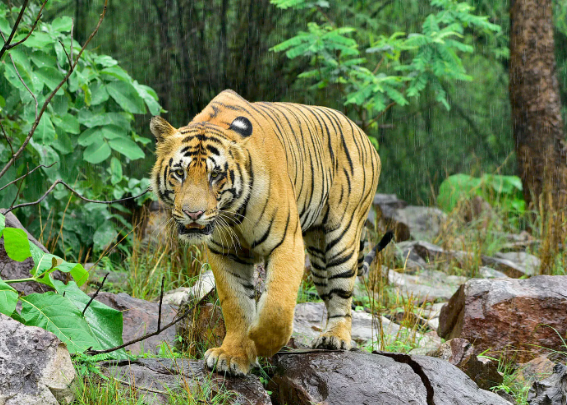Bengal Tigers in the Wild: Guardians of the Jungle
Bengal tigers are one of the most magnificent creatures on our planet, and their survival is crucial for maintaining ecological balance. As the largest tiger subspecies, they command respect and intrigue, making them a focal point in conservation efforts. Understanding their behaviors, habitats, and the challenges they face provides insight into the importance of protecting these iconic animals for future generations.
The Habitat of the Bengal Tiger
Bengal tigers primarily inhabit the lush forests of India, with smaller populations found in Bangladesh, Nepal, and Bhutan. These majestic cats prefer habitats that provide dense vegetation and water sources, which are vital for hunting and breeding. The Sundarbans, a vast mangrove forest in India and Bangladesh, is home to a unique population of Bengal tigers adapted to brackish waters. Protecting these habitats not only ensures the survival of the tigers but also supports the diverse ecosystems they inhabit.
Behavior and Hunting Strategies
Bengal tigers are solitary animals known for their stealth and strength. They use a mix of strategies to hunt prey, often stalking through underbrush before making a sudden, powerful leap to catch their target. Their diet mainly consists of deer, wild boar, and sometimes even smaller animals. Interestingly, Bengal tigers are known to be excellent swimmers and often take to water to pursue prey or cool off. Understanding their hunting techniques can help researchers protect their natural behaviors and habitats more effectively.
Conservation Challenges
Despite their status as apex predators, Bengal tigers are critically endangered, with habitat loss and poaching posing significant threats to their survival. Deforestation for agriculture, urban development, and illegal logging erodes their natural habitats, pushing them further into human-populated areas. Conservation programs aimed at protecting tigers also focus on educating local communities about the importance of biodiversity and involving them in preservation efforts. Every person can play a role in conservation by advocating for wildlife protection and supporting organizations dedicated to saving these majestic cats.
In conclusion, Bengal tigers are not just symbols of strength; they are vital to the health of their ecosystems. By understanding their habitat, behaviors, and the challenges they face, we can all contribute to their conservation. Let’s take a moment to appreciate these magnificent creatures and explore how we can help ensure their survival for generations to come. Whether through advocacy or simply spreading awareness, every little effort counts!

